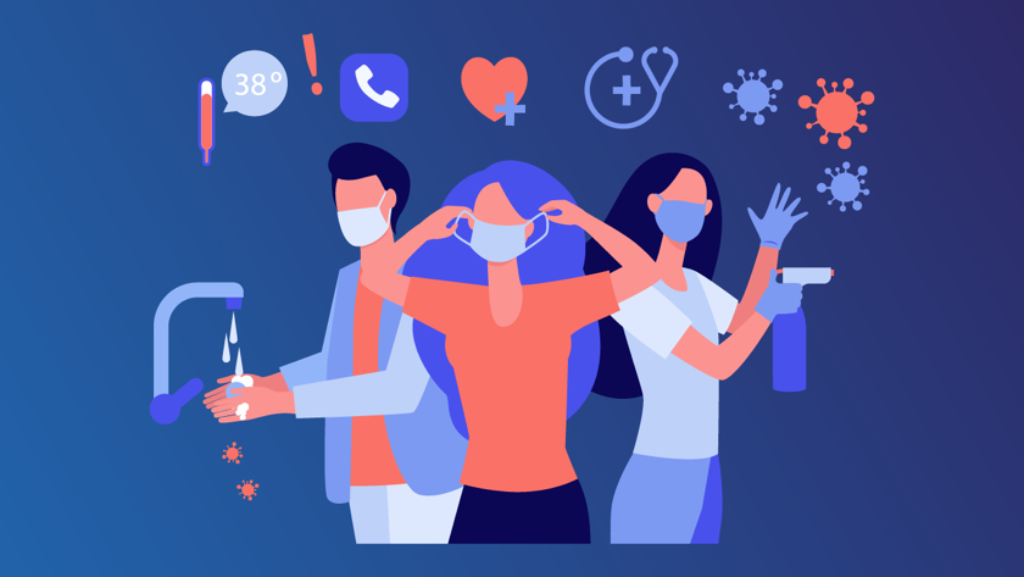Table of Contents
It’s been almost two years since the pandemic happened and massively transformed the industries worldwide. The healthcare industry was probably the one that was affected the most and no wonder it underwent significant transformations throughout the last year. One of the biggest changes that happened to it was the rise of telemedicine aka virtual healthcare. Below, we will have a look at the impact of COVID-19 on telemedicine and what the future holds for it.

The growth of the telemedicine industry in the last year
The biggest challenge that the pandemic placed in front of us was social distancing. Needless to say, this had a huge impact on businesses worldwide, and healthcare was greatly affected too. Due to the pandemic, patients were no longer able to visit a medical establishment in person because of the contamination risk. Hence, remote patient care skyrocketed.
As McKinsey states, in 2019, only 11% of the U.S citizens relied on telemedicine – in 2021, the number grew up to 46%. Another impressive number is the amount of investment that telemedicine saw in 2020: it was 3X more than the investment amount in 2017.
An interesting fact to observe is that people used to be hesitant towards telemedicine a few years ago but today, a great number of people claim to continue to use telemedicine services even after the pandemic starts to decline. With this in mind, it’s safe to assume that telemedicine has become one of the most promising industries in terms of investment.
The main areas of impact
While not all medical services can be provided remotely, there is still a great number of them that were successfully transferred into the digital format. Below are the biggest examples.
Remote psychological help
One of the biggest effects that the pandemic had on people was the psychological impact. Obligatory lockdown, the inability to travel to see family and friends, the overall lack of understanding of the situation – all that led to the rise of psychological problems that people all over the world experienced. And without the opportunity to visit a therapist in person, it came as no surprise that remote psychological help became really popular.
Today, there are many digital solutions that help people in various ways:
- Provide remote psychological services (i.e. therapy);
- Allow to evaluate one’s state and seek help, if needed;
- Mobile apps for self-care (i.e. meditation, anti-anxiety. etc.).
The latter ones are especially popular these days. While a healthcare mobile app cannot provide full-fledged medical services (especially in emergency cases), it can significantly reduce anxiety and help people generally improve their psychological well-being. Note that such apps are a great asset for doctors too – they help efficiently manage all processes from one place.
Virtual assistants
Mobile virtual assistants are digital solutions that help patients monitor their health state, perform regular checks, and contact the doctor. Many digital assistants are AI-powered which makes them capable of recognizing any warning symptoms and contacting medical professionals, correspondingly.
Such apps are of great use for patients with diabetes, psychological issues, and other health states that require constant monitoring. With virtual assistants, patients do not need to visit a medical establishment and are able to receive high-quality care at the same time.
Health monitoring solutions
One of the things that have become a daily routine for many people since COVID-19 happened is daily health checks for any warning symptoms (i.e. temperature, coughing, loss of smell). Mobile health monitoring solutions have become a valuable asset in performing these checks and helping people constantly monitor the state of their health with a few taps only.
These solutions can be used before leaving the house for work or before entering a medical establishment to prevent possible contamination. And while seemingly simple, such apps are highly efficient as they contribute to preventing the spread of the virus by timely identifying its symptoms.
The biggest challenges for telemedicine today
While telemedicine has become somewhat a new reality for healthcare workers and patients, there are still a few challenges that the industry is facing.
First, there are technical challenges, meaning, many medical establishments lack the necessary resources to implement digital healthcare. As well, many healthcare professionals remain quite hesitant towards telemedicine and its implementation which also slows down the implementation process.
Second, there is a major security issue. All digital products have to be HIPAA compliant to ensure the safety and protection of patients’ data. And if a hospital implements a digital solution, it has to be 100% secure.
Hence, the state of telemedicine today is very promising and this domain has transformed a lot – but there is still a long way to go until most medical establishments across the world will be able to have access to all the benefits that telemedicine offers.



Comments